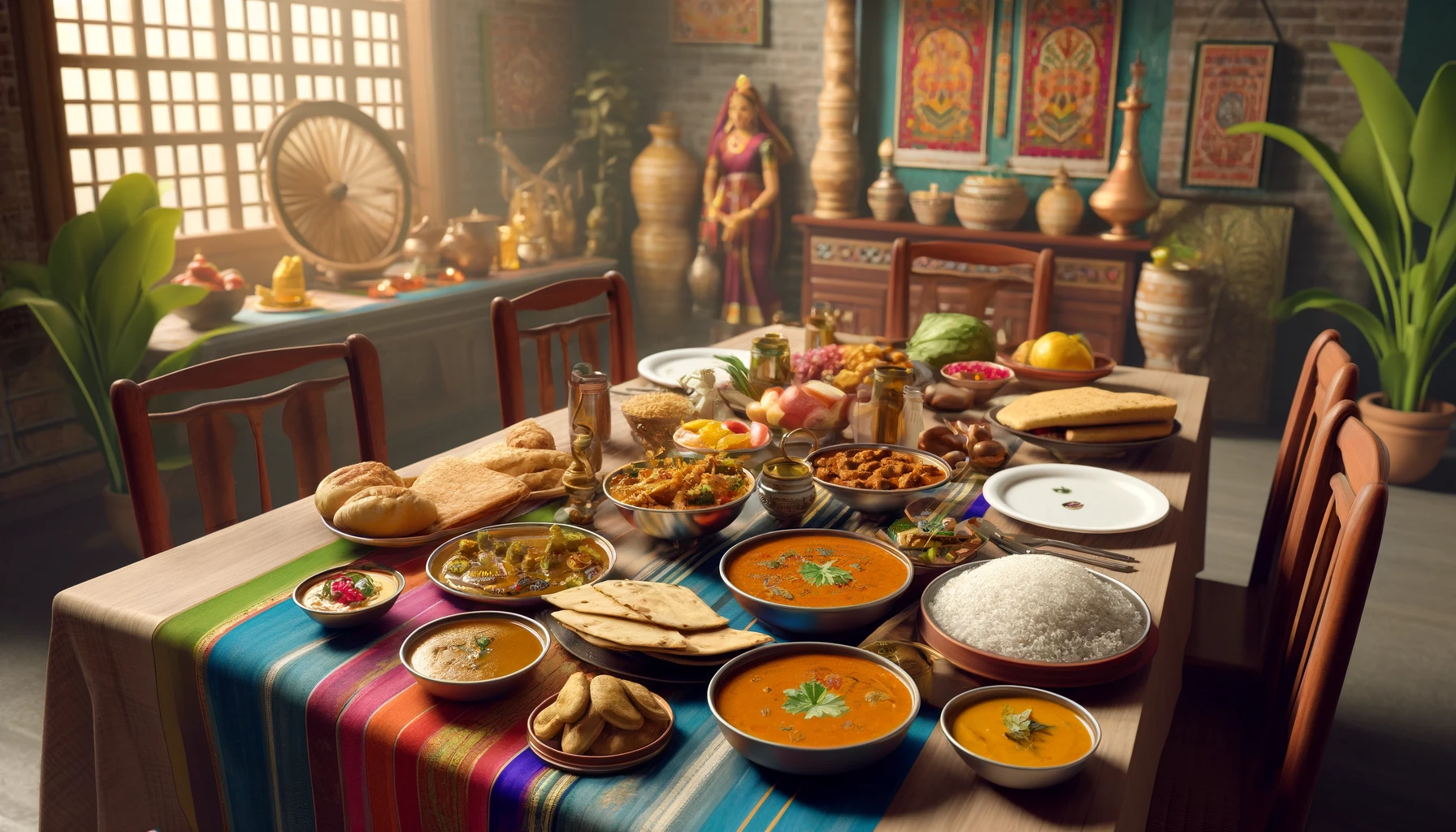Understanding The Basics Of Indian Etiquette
Visiting India is an extraordinary experience, offering travelers a chance to immerse themselves in a culture rich with history, tradition, and diversity. The warmth and hospitality of the Indian people make it a welcoming destination, but understanding and respecting local customs and etiquette is crucial for a respectful and enjoyable trip. Here are some essential tips for visitors to help navigate the cultural landscape of India.
Dress Conservatively
India is a country with deep-rooted traditions, and conservative dress is often a reflection of respect for cultural and religious norms. When visiting temples, mosques, and other religious sites, it’s important to dress modestly. This typically means covering your shoulders, chest, and legs. For women, long skirts, dresses, or loose pants paired with blouses or tops that cover the shoulders and chest are ideal. Men should opt for long pants and shirts with sleeves.
In many religious sites, you will be required to remove your shoes before entering. Wearing slip-on shoes can make this process more convenient. Some temples also provide scarves or shawls to cover your head, but it’s a good idea to carry your own just in case.
Greet With "Namaste"
The traditional Indian greeting "Namaste" (pronounced NAH-muh-stay) is a gesture of respect and goodwill. To perform the Namaste gesture, press your palms together at your chest, bow your head slightly, and say "Namaste." This greeting is appropriate when meeting someone for the first time, during departures, and even as a sign of respect.
Using Namaste instead of a handshake is particularly appreciated in more traditional or rural areas. It signifies a respect for Indian customs and helps build a connection with the local people. While a handshake is becoming more common in urban settings, especially in business contexts, Namaste remains a universally accepted and revered form of greeting.
Eat With Your Right Hand
In India, the right hand is traditionally used for eating, while the left hand is considered unclean as it is used for personal hygiene. If you are eating with your fingers, use your right hand to tear off pieces of bread or to pick up food. It's customary to use your thumb and the first two fingers, avoiding the use of your entire hand to scoop food.
When eating in a more formal setting or when dining with others, be mindful to use utensils properly, but continue to use your right hand for handling food. If you are left-handed, it’s a good practice to make an effort to use your right hand when possible to respect local customs.
Pointing with your index finger is also considered rude in India. Instead, use your whole hand or your thumb to gesture or indicate something. This small adjustment in behavior shows an understanding and respect for cultural norms.

Remove Your Shoes
Removing your shoes before entering someone's home, a temple, or a mosque is a sign of respect and cleanliness in Indian culture. This practice helps keep the living and sacred spaces clean and free from outside dirt. In some cases, you may also be asked to remove your shoes in certain shops or restaurants.

Look for a shoe rack or a designated area near the entrance to place your shoes. If you are unsure, observe what the locals are doing or ask politely. It’s a simple act that goes a long way in showing respect for the host’s space and traditions.
Avoid Public Displays Of Affection
Public displays of affection (PDA) are generally frowned upon in India, especially in conservative areas. While holding hands might be acceptable in some urban settings, more intimate gestures like hugging and kissing are best kept private. Even among married couples, PDA is not commonly observed and can attract unwanted attention or discomfort.
Being mindful of this cultural norm can help you avoid awkward situations and show respect for the local customs. In more modern, urban environments like Mumbai or Delhi, you might find younger couples displaying affection more openly, but it’s always best to err on the side of caution and observe the local behavior before engaging in PDA.
Be Careful With Your Feet
In Indian culture, the feet are considered the lowest and dirtiest part of the body, both physically and symbolically. Avoid pointing your feet at people or religious objects, and try not to touch anything or anyone with your feet. If you accidentally touch someone with your foot, it’s polite to immediately apologize as a sign of respect.
When sitting, avoid showing the soles of your feet, especially when sitting cross-legged. Be mindful of where you place your feet in crowded spaces like trains or buses. This cultural sensitivity around feet underscores the broader Indian ethos of respect and cleanliness.
Respect Religious Practices
India is a deeply spiritual country with a rich tapestry of religions, including Hinduism, Islam, Christianity, Sikhism, Buddhism, and Jainism. When visiting religious sites, it’s important to be respectful of the practices and rituals taking place.
Temples and Mosques: Dress modestly, remove your shoes, and observe any specific rules, such as covering your head. Women may need to wear scarves in some temples or mosques.
Ceremonies and Prayers: Avoid interrupting prayers or ceremonies. If you are unsure of what to do, follow the lead of the locals or ask for guidance politely.
Showing respect for religious practices not only helps you blend in but also enriches your cultural experience, allowing you to witness the spiritual depth of Indian life.
By understanding and embracing these basic aspects of Indian cultural etiquette, you set the stage for a respectful and enriching travel experience.
Navigating Social Interactions And Daily Etiquette
In addition to understanding the basic cultural norms, navigating daily interactions and practices in India requires a bit of finesse. From bargaining in bustling markets to engaging with locals, here are some essential tips to help you make the most of your experience while respecting Indian customs.
Bargain Politely
Bargaining is a common practice in India, especially in local markets, street stalls, and small shops. It can be a fun and engaging way to interact with vendors and potentially get a good deal. However, it’s important to approach bargaining with respect and politeness.
Tips For Successful Bargaining
Start Low, but Reasonable: Begin by offering a price lower than what you are willing to pay, but make sure it’s not so low that it insults the vendor.
Be Polite and Friendly: A smile and a friendly demeanor can go a long way. Engage in light conversation, show appreciation for the items, and avoid being confrontational.
Know When to Walk Away: If you can’t reach an agreement, it’s perfectly fine to walk away. Often, vendors might call you back and agree to your price. If not, there are usually many other stalls selling similar items.
Understand Cultural Context: In some cases, the vendor’s livelihood might depend on the sale, so it’s important to be fair and considerate in your bargaining approach.
By bargaining politely and respectfully, you can enjoy the process and perhaps gain a deeper appreciation for the local culture and commerce.
Accept Hospitality Graciously
Indian hospitality is renowned worldwide. Visitors often find themselves invited to homes for meals or offered tea and snacks during interactions. Accepting such invitations and gestures graciously is a great way to experience the warmth of Indian culture.
Tips for Accepting Hospitality
Bring a Small Gift: When invited to someone’s home, bringing a small gift like sweets, fruits, or flowers is a nice gesture of appreciation.
Compliment the Food: Indian hosts take pride in their culinary skills. Complimenting the food and asking for recipes can make your hosts feel appreciated and valued.
Engage in Conversations: Show interest in your hosts’ lives, culture, and traditions. Sharing stories and experiences can create a meaningful connection.
Be Mindful Of Personal Space
Indian norms around personal space can differ from those in Western cultures. In crowded places like markets, public transport, and busy streets, close physical proximity is common. However, when it comes to personal interactions, particularly with the opposite gender, a respectful distance is appreciated.
Tips For Respecting Personal Space
Avoid Excessive Touching: Outside of close family and friends, avoid excessive physical contact. A handshake is acceptable in professional settings, but hugs and kisses are generally reserved for close relations.
Respect Privacy: If someone seems uncomfortable with close proximity, step back and give them more space.
Navigate Public Transportation
Public transportation in India can be an adventure in itself, offering a glimpse into the daily lives of locals. Whether you’re traveling by train, bus, auto-rickshaw, or metro, understanding the etiquette can enhance your experience.
Tips For Using Public Transportation
Trains: Indian trains range from luxurious to basic. Always check your ticket class and ensure you’re in the right compartment. In reserved compartments, be mindful of others’ space and belongings. In unreserved compartments, be prepared for crowds and limited space.
Buses: Buses can get crowded, especially during peak hours. Offer your seat to elderly passengers or women with children if the bus is full.
Auto-Rickshaws: Always agree on a fare before starting your journey. In some cities, auto-rickshaws have meters, so insist on using them.
Metro: The metro systems in cities like Delhi, Mumbai, and Bangalore are efficient and relatively easy to navigate. Follow the rules, such as standing in line, offering seats to those in need, and not eating or drinking inside the train.
Interacting With Street Vendors
Street vendors are a ubiquitous part of Indian life, offering everything from snacks and tea to clothing and souvenirs. Interacting with them can be a delightful experience if done respectfully.
Tips For Interacting With Street Vendors
Show Respect: Address vendors politely and with respect. Avoid haggling excessively for minor price differences, as many vendors operate on thin margins.
Try Local Delicacies: Street food is a highlight of Indian cuisine. Trying local snacks like samosas, chaats, and pani puri can be a memorable part of your trip. Just ensure the food is prepared in hygienic conditions.
Support Local Crafts: Purchasing handcrafted items from street vendors and local markets supports local artisans and keeps traditional crafts alive.
Respecting Elders
Respect for elders is deeply ingrained in Indian culture. Elders are often addressed with honorifics and shown great respect in both private and public settings.
Tips For Showing Respect To Elders
Use Appropriate Titles: Address elders with titles such as “ji” after their names (e.g., Sharma-ji) as a sign of respect.
Offer Seats: In public places or transportation, offer your seat to elders.
Greet First: When entering a room or meeting someone, greet the elders first with a Namaste or the appropriate gesture for the setting.
Understanding Social Hierarchies
India's social structure can be complex, with hierarchies based on age, gender, and social status playing a significant role in interactions.
Tips For Navigating Social Hierarchies
Observe and Adapt: Pay attention to how locals interact and adapt accordingly. In professional settings, for example, addressing superiors with the proper titles and showing deference is important.
Be Humble: Demonstrating humility and respect in your interactions will help you gain respect and build rapport with locals.
Photographic Etiquette
India offers countless opportunities for photography, from bustling markets and vibrant festivals to serene landscapes and historic monuments. However, it’s important to be mindful of local customs when taking photos.
Tips For Respectful Photography
Ask for Permission: Always ask for permission before taking photos of people, especially women and children. In rural areas, some people may be uncomfortable with being photographed.
Respect No-Photo Zones: Some religious sites, museums, and monuments prohibit photography. Always respect these rules.
Be Discreet: Avoid taking intrusive photos, especially during personal or religious moments.
By following these tips, you can navigate social interactions and daily etiquette in India with confidence and respect.
Further Travel Tips And Embracing Local Customs
As you continue to explore India, understanding and respecting the nuances of local customs and traditions will enhance your travel experience. Here are some additional tips to help you navigate the cultural landscape, handle money matters, and immerse yourself in India’s vibrant traditions.
Handling Money Matters
Managing money efficiently is crucial while traveling in India. Here are some tips to ensure smooth financial transactions during your trip:
Currency And Payments
Carry Cash: While credit and debit cards are widely accepted in urban areas, carrying cash is essential, especially in rural areas and for small purchases. ATMs are readily available in cities, so withdrawing money periodically is a good idea.
Use Small Denominations: Having small denominations is helpful for paying rickshaw fares, street food vendors, and small shops. Breaking large notes can be difficult in such situations.
Digital Payments: India has embraced digital payments, and services like Paytm, Google Pay, and BHIM are commonly used. However, it's best to have a mix of payment options to cover all scenarios.
Tipping Etiquette
Tipping is appreciated in many service sectors in India. Here’s a quick guide on when and how much to tip:
Restaurants: A tip of 10-15% of the bill is customary in restaurants. Some establishments may include a service charge, in which case additional tipping is not necessary.
Hotels: For bellboys, a tip of INR 50-100 is appropriate. Housekeeping staff can be tipped INR 100-200 at the end of your stay.
Guides and Drivers: Tour guides typically expect a tip of INR 300-500 per day, while drivers can be tipped INR 200-300 per day.
Street Vendors and Taxis: Tipping is not expected, but rounding up the fare or leaving small change is appreciated.
Embrace Local Traditions
India’s cultural heritage is rich with traditions that vary from region to region. Embracing these customs can deepen your connection with the local culture.
Participate In Festivals
India’s festivals are a vibrant display of its cultural diversity. Participating in these celebrations can be a highlight of your trip:
Diwali: Known as the Festival of Lights, Diwali is celebrated with the lighting of oil lamps, fireworks, and the exchange of sweets. Joining a local family for Diwali can provide an authentic experience.
Holi: The Festival of Colors is celebrated with joyous color throwing, music, and dancing. Participate in community celebrations to fully experience the festival.
Navratri: This nine-night festival dedicated to Goddess Durga involves music, dance, and fasting. Attending a Garba or Dandiya dance event is a wonderful way to immerse yourself in the festivities.
Learn Basic Phrases
Learning a few basic phrases in the local language can go a long way in building rapport with locals. Hindi is widely spoken, but each region has its own language:
Hello/Goodbye: "Namaste" (Hindi)
Thank You: "Dhanyavaad" (Hindi)
Please: "Kripya" (Hindi)
Yes/No: "Haan/Nahin" (Hindi)
Even if your pronunciation isn’t perfect, locals will appreciate the effort and respond warmly.
Be Respectful Of Time
Understanding and respecting the concept of time in India can help you navigate social and professional settings more effectively.
Indian Standard Time
While punctuality is valued, there is often a flexible approach to time, commonly referred to as “Indian Standard Time” (IST). Be prepared for delays and allow for flexibility in your schedule. In professional settings, however, punctuality is appreciated and can make a positive impression.
Meal Times
Meal times in India may differ from what you’re used to. Lunch is typically served between 1 PM and 3 PM, while dinner is often eaten late, around 8 PM to 10 PM. Adjusting to these timings can enhance your dining experiences and align you with local practices.
Show Patience And Politeness
India’s pace and the sheer volume of people can be overwhelming, but patience and politeness will serve you well.
Queue Etiquette
In crowded places like railway stations, temples, or ticket counters, queues might not always be orderly. Stay calm, maintain your place, and be patient. In some cases, assertiveness is necessary, but always remain polite.
Handling Bureaucracy
Dealing with bureaucracy in India can be time-consuming. Whether it’s at the airport, applying for permits, or navigating official processes, patience is key. Keep your documents organized and be prepared for occasional delays.
Respect Environmental Practices
India is home to diverse ecosystems and natural beauty. Respecting the environment is crucial to preserving these treasures.
Avoid Single-Use Plastics
Many regions in India are working towards reducing plastic waste. Carry a reusable water bottle, bags, and utensils to minimize your environmental footprint.
Follow Eco-Friendly Practices
When visiting natural sites, national parks, or rural areas, follow eco-friendly practices. Avoid littering, respect wildlife, and support sustainable tourism initiatives. Engaging with local communities on environmental issues can provide deeper insights into regional conservation efforts.
Understand Social Sensitivities
Being aware of social sensitivities and acting respectfully can make your interactions more positive and enriching.
Gender Sensitivity
While India is making strides towards gender equality, traditional gender roles can still be prevalent, especially in rural areas. Respect local customs regarding interactions between men and women. Women travelers should be mindful of their attire and behavior to avoid unwanted attention.
Photography
Always ask for permission before photographing people, especially women and children. Respect signs that prohibit photography in certain areas, such as religious sites and military zones.
Embrace The Journey with Respect And Openness
India’s rich cultural heritage and diverse traditions offer travelers an unparalleled experience. By understanding and respecting local customs, you can navigate this incredible country with confidence and grace. Remember to dress modestly, greet with Namaste, respect religious practices, and handle social interactions with care. Embrace the local traditions, be patient and polite, and show respect for the environment and social sensitivities.
Traveling in India is a journey of discovery, not just of new places but also of new perspectives. By immersing yourself in the local culture and approaching each experience with an open mind, you will gain deeper insights and create lasting memories. Safe travels, and enjoy the vibrant tapestry of India’s cultural heritage!
For more detailed guidance and resources on exploring India, visit IndiaVisaHub. The website provides comprehensive information on visa requirements, travel tips, and cultural insights to help you plan your journey.







